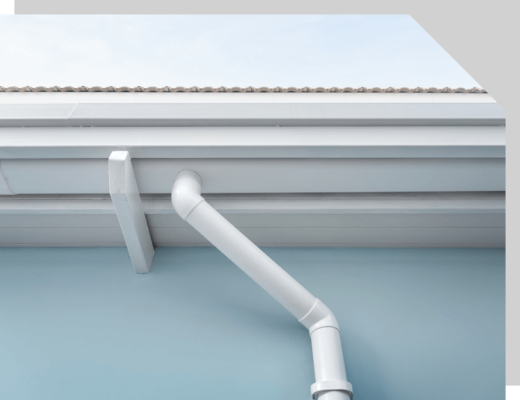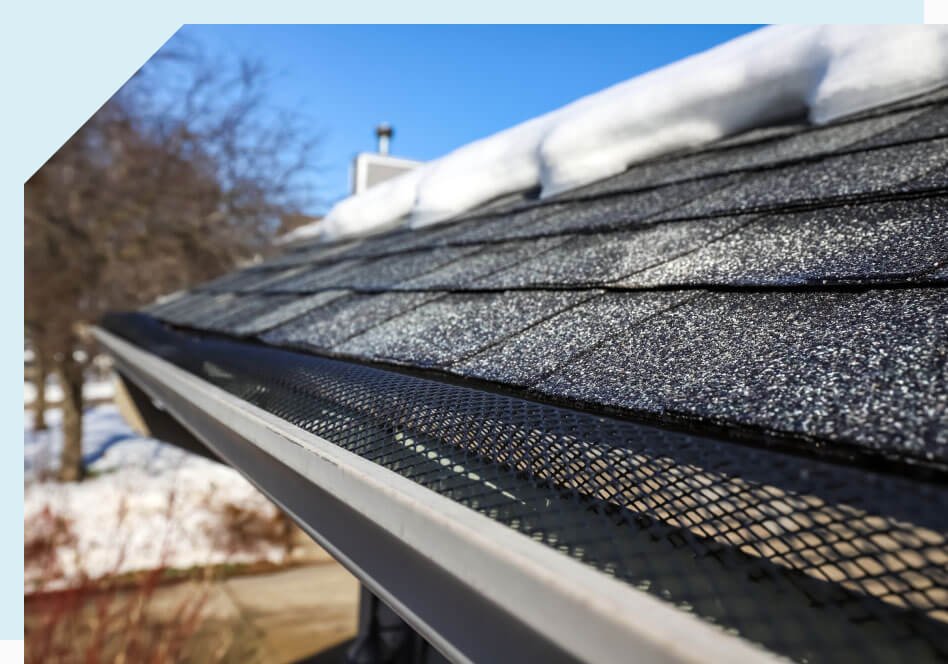Gutter Maintenance for The Harshest Seasons
Winter and Fall can be a particularly challenging time for gutter maintenance, especially in colder climates where snow and ice are common. When gutters become clogged with ice or snow, it can cause a backup of water that can lead to serious problems, such as roof leaks, ice dams, and damage to the gutters themselves.
The expert contractors from Thunder Bay Roofing are here to give you information on how to prepare your gutter system for the colder seasons and make certain your property stays warm and dry. If you have questions or need gutter replacement or gutter installation services, contact our Maryland contractors today at 410-956-7663.

Preparing Your Gutter System for Winter Weather
Preparing your gutters for fall and winter is essential to prevent clogs, ice dams, and potential damage to your home. Here’s a checklist to ensure your gutters are ready for the seasonal changes:
- Clean Gutters: Remove all debris, such as leaves, twigs, and dirt, from the gutters and downspouts. Use a gutter scoop, a small shovel, or your hands (wearing gloves) to clear out the gunk. Ensure that water can flow freely through the gutters.
- Inspect for Damage: Check for any signs of damage such as cracks, rust, or sagging. Repair or replace damaged sections to ensure proper functionality.
- Secure Gutters: Make sure that gutters are securely attached to the fascia board. Tighten loose screws or brackets and replace any damaged or missing fasteners.
- Trim Overhanging Branches: Trim back branches that hang over your roof and gutters. This will help prevent leaves and debris from falling into the gutters and reduce the risk of damage during storms.
- Install Gutter Guards: Consider installing gutter guards or screens to help prevent leaves and debris from accumulating in the gutters while still allowing water to flow freely.
- Check Downspouts: Ensure that downspouts are clear of debris and properly attached. Use a plumber’s snake or a pressure washer to clear any clogs. Ensure that downspouts extend at least 5 feet away from the foundation to prevent water damage.
- Seal Leaks: Inspect the seams and joints of your gutters for any signs of leaks. Use gutter sealant or caulking to seal any leaks and prevent water from escaping.
- Inspect Roof: Check your roof for loose or damaged shingles and repair them as needed. Damaged shingles can contribute to debris buildup in gutters and lead to leaks.
- Schedule Regular Maintenance: Make gutter maintenance a regular part of your seasonal home maintenance routine. Regularly clean and inspect your gutters to ensure they remain in good condition throughout the year.

How to Maintain Your Gutters in the Winter and Fall
Fall and winter gutter maintenance tips include:
- Keep Gutters Clean: Be sure to clean your gutters thoroughly before winter sets in. Removing leaves, twigs, and other debris will help to prevent gutter clogs and backups. If you’re dealing with clogged gutters, use a hand trowel or gutter scoop to remove as much debris as possible before using warm water to melt any remaining ice or snow.
- Install Gutter Heaters: If you live in an area with frequent snow and ice, consider installing gutter heaters to help melt any ice buildup. These heating cables are attached to the gutters and run along the roofline, preventing snow and ice from accumulating and clogging up the gutters.
- Check for Ice Dams in Cold Weather: Ice dams can form on the edge of your roof and prevent water from draining properly. This can cause water to back up and leak into your home, leading to water damage and other issues. Keep an eye out for ice dams and take steps to prevent them from forming, such as installing proper insulation and ventilation in your attic.
- Repair Any Damage: If you notice any damage to your gutters or downspouts, be sure to repair it or have it repaired by a professional like those at Thunder Bay Roofing before winter sets in. This will help to prevent further damage from snow and ice buildup.
By taking these steps, you can help to keep your entire gutter system functioning properly during the winter and fall months and prevent any serious damage from occurring.
How to Spot and Prevent Ice Dams
Ice dams are a common problem during the winter season, especially in areas with heavy snowfall. Ice dams form when snow on the roof melts due to heat escaping from the house, and then refreezes at the edge of the roof, forming a dam. This can cause damage to the roof, walls, and insulation, as well as lead to leaks and water damage inside the house.
Spotting Ice Dams
Look for icicles hanging from the edge of the roof or along the gutters, as well as a buildup of ice or snow on the roof. If you notice water stains on the ceiling or walls, it could be a sign of a leak caused by an ice dam.
Preventing Ice Dams
One of the best ways to prevent ice dams is to ensure proper attic insulation and ventilation. This will prevent heat from escaping through the roof and melting the snow. You can also install heat tape along the edge of the roof or gutters to melt the snow and prevent it from refreezing. Another option is to use a roof rake to remove snow from the roof before it has a chance to melt and refreeze.
Removing Ice Dams
If you do have an ice dam, remove it as soon as possible to prevent further damage. You can use a roof rake or snow shovel to remove the snow and ice or hire a professional to do it for you. Don’t use an ice pick or other sharp tools, as they can damage the roof and gutters.
How to Safely Remove Ice and Snow From Gutters
Removing ice and snow from gutters can be a challenging and potentially dangerous task. Here are some tips on how to safely remove ice and snow from gutters:
- Use a Ladder: Always use a sturdy ladder when working on your gutters. Ensure that the ladder is secure and that someone is holding it steady from the ground while you work.
- Wear Appropriate Gear: Wear gloves to protect your hands and non-slip footwear for better grip. Also, wear a warm, waterproof jacket and hat to protect yourself from the cold.
- Use a Gutter Scoop or Trowel: Use a gutter scoop or trowel to remove loose snow and ice from the gutters. Avoid using sharp tools that could damage your gutters.
- Use Warm Water: If your gutters are clogged with ice, try pouring warm water down the gutter to melt the ice. Do not use hot water, as this can damage your gutters.
- Use a Roof Rake: If your roof is covered in snow, use a roof rake to remove snow before it falls into your gutters. This will help prevent clogs and ice dams from forming.
- Hire a Professional: If you’re uncomfortable working on a ladder or if your gutters are particularly high, it’s best to hire a gutter cleaning service to remove ice and snow from your gutters.

Frequently Asked Questions
It’s recommended to clean your gutters at least twice during the winter season, preferably before the first snowfall and again in the middle of winter. However, if you notice any clogs or buildup of ice and snow, it’s important to clean them out as soon as possible to prevent any serious damage. Regular gutter maintenance can help to ensure proper functioning and prevent issues like ice dams and roof leaks.
Installing gutter heaters can be a complex process, and it’s generally recommended to hire a professional to ensure proper installation and safety. However, if you have experience with electrical work and feel comfortable doing it yourself, you can install it with proper precautions and instructions.
No, it’s not recommended to use rock salt or ice melt to clear ice from your gutters, as they can cause damage to the gutters and downspouts. It’s best to use warm water or a safe ice-melting product specifically designed for gutters.
